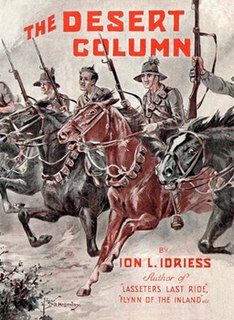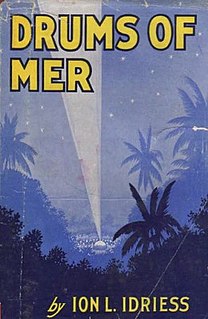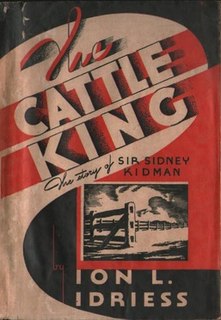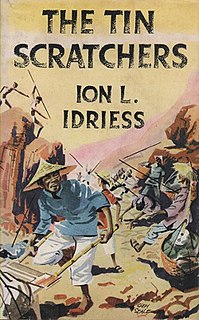
A sniper is a military/paramilitary marksman who engages targets from positions of concealment or at distances exceeding the target's detection capabilities. Snipers generally have specialized training and are equipped with high-precision rifles and high-magnification optics, and often also serve as scouts/observers feeding tactical information back to their units or command headquarters.

William Edward Sing, DCM was an Australian soldier of Chinese and English descent who served in the Australian Imperial Force during World War I, best known as a sniper during the Gallipoli Campaign. He took at least 150 confirmed kills during that campaign, and may have had over 200 kills in total. However, contemporary evidence puts his tally at close to 300 kills. Towards the end of the war, Sing married a Scottish woman, but the relationship did not last long. Following work in sheep farming and gold mining, he died in relative poverty and obscurity in Brisbane during World War II.

Ion Llewellyn Idriess, OBE was a prolific and influential Australian author. He wrote more than 50 books over 43 years between 1927 and 1969 – an average of one book every 10 months, and twice published three books in one year. His first book was Madman's Island, published in 1927 at the age of 38, and his last was written at the age of 79. Called Challenge of the North, it told of Idriess's ideas for developing the north of Australia.
Men of Timor is a 1943 short documentary propaganda film about the guerrilla warfare activities of Sparrow Force on Timor Island during World War II.

Madman's Island is a 1927 novel by Ion Idriess set in northern Australia. It was Idriess' first novel and was semi-autobiographical, although he invented the love interest at the insistence of the publisher.

The Desert Column; leaves from the diary of an Australian trooper in Gallipoli, Sinai and Palestine is a book by Ion Idriess based on a diary he kept of his service during World War I.

Gold Dust and Ashes is a book by Ion Idriess set in Bulolo in the New Guinea goldfields. It covers the history of gold exploration in the region, including occupation by the Germans, transfer to Australian governorship, the efforts of Cecil Levien to pioneer gold mining, and the role of New Guinea Airways in the industry.

Drums of Mer is a 1933 Australian novel by Ion Idriess set in the Torres Strait.

The Cattle King is an Australian biography of Sidney Kidman.

Forty Fathoms Deep: Pearldivers and Searovers in Australian Waters is a 1937 book from Ion Idriess about pearl divers.

Men of the Jungle is a 1932 book by Ion Idriess. It covered three years in the life of Idriess and his three companions as they worked in north-east Queensland.

Over the Range: Sunshine and Shadow in the Kimberley is a 1937 book by Ion Idriess about life in the Kimberley Region in Western Australia.

The Tin Scratchers: The Story of Tin Mining in the Far North is a 1959 autobiographical book by Ion Idriess.

Outlaws of the Leopolds is a 1952 non-fiction history book by Ion Idriess. It concerned the aboriginal resistance leader Sandamara in the 1890s.

Across the Nullarbor is a 1951 book by Ion Idriess. It was based on a trip he took across the Nullarbor Plain.

Nemarluk: King of the Wilds is a book by Ion Idriess about aboriginal warrior Nemarluk.

The Wild White Man of Badu is a 1950 novel by Ion Idriess. It is about two convicts who escape from Norfolk Island and travel to Badu Island on the Torres Strait.

Horrie the Wog Dog is a 1945 book by Ion Idriess about the adventures of Horrie the Wog Dog, the Australian war mascot.
Prospecting for Gold is a 1931 non fiction book by Ion Idriess. It is a guide on how to prospect for gold.

Onward Australia is a 1944 book by Ion Idriess which proposes how Australia could be developed. It was part of the Battle for Australia series.


















